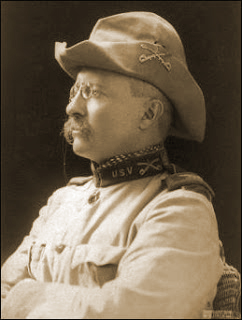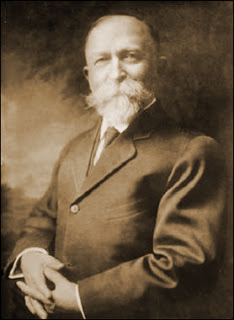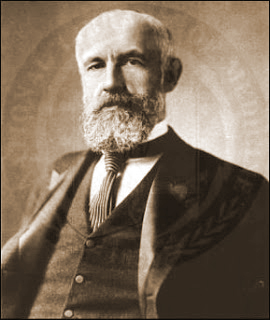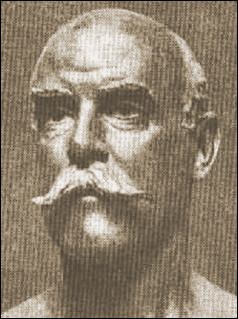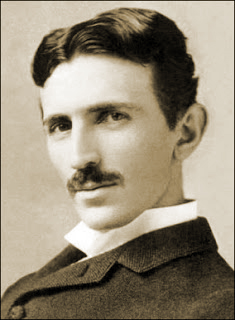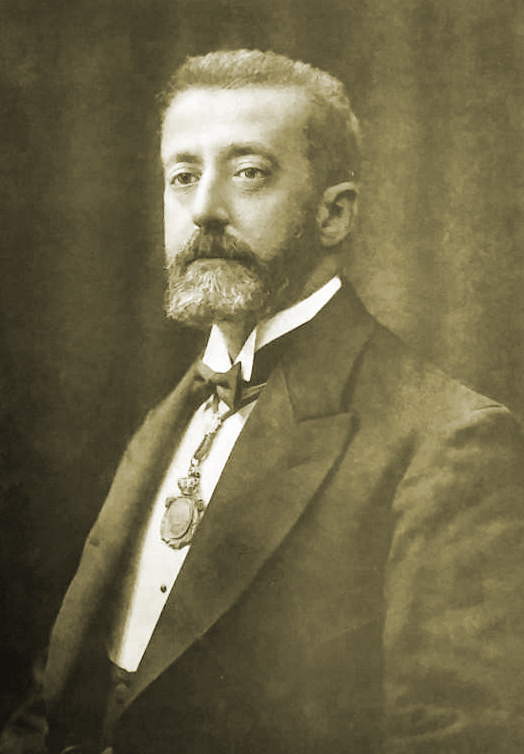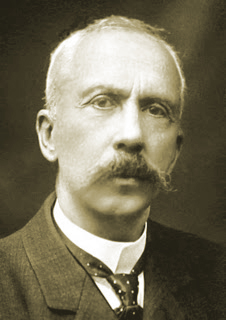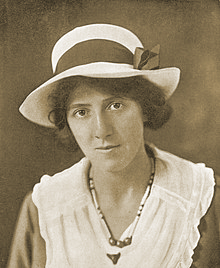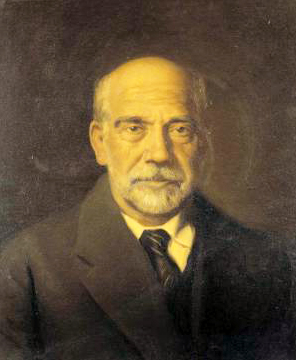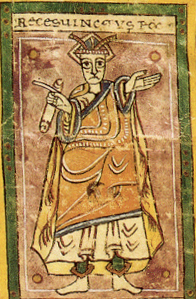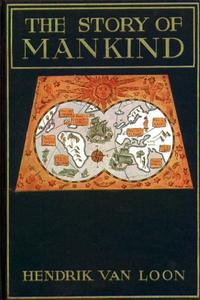It cannot be repeated or emphasised enough: intolerance, religious or philosophical, is characteristic of devotees of ‘man’ regardless of any consideration of race or personality. As a result, it is the real racists who show the greatest tolerance.
No doubt racists demand from their comrades in arms absolute fidelity to the common faith. This is not ‘intolerance’; it is a question of order. Everyone must know what they want, and not adhere to a doctrine and then make reservations about it. Whoever has objections to formulate—and above all, objections concerning the basic values of the doctrine—has only to remain outside the community of the faithful, and not to pretend to be the comrade of those with whom he does not share faith entirely. No doubt also the racist is ready to fight men who act, and even who think, as enemies of their race. But he does not fight them in order to change them, to convert them. If they stay in their place, and stop opposing him and his blood brothers, he leaves them alone—for he is not interested enough in them to care about their fate, in this world or into another.
In the third Book of his Essays, Montaigne laments that the Americas were not conquered ‘by the Greeks or the Romans’, rather than by the Spaniards and the Portuguese. He believes that the New World would never have known the horrors committed to converting the native to a religion considered by the conquerors to be the ‘only’ good, the only true one.
What he does not say; what, perhaps, he had not understood, is that it is precisely the absence of racism and the love of ‘man’ that are at the root of these horrors. The Greeks and Romans—and all ancient peoples—were racists, at least during their time of greatness. As such they found it quite natural that different peoples had different gods, and different customs. They did not get involved in imposing their own gods and customs on the vanquished, under pain of extermination.
Even the Jews did not do this. They so despised all those who sacrificed to gods other than Yahweh, that they were content—on the order of this god, says the Bible—to exterminate them without seeking to convert them. They imposed on them the terror of war—not that ‘spiritual terror’ which, as Adolf Hitler so aptly writes, ‘entered for the first time into the Ancient World, until then much freer than ours, with the appearance of Christianity’.[1] The Spaniards, the Portuguese, were Christians. They imposed terror of war and spiritual terror on the Americas.
What would the Greeks of ancient Greece have done in their place, or the Romans or other Aryan people who would have had, in the sixteenth century, the spirit of our racists of the twentieth? They would undoubtedly have conquered the countries; they would have exploited them economically. But they would have left to the Aztecs, Tlaxcaltecs, Mayans, etc., as well as the peoples of Peru, their gods and their customs. Furthermore, they would have fully exploited the belief of these peoples in a ‘white and bearded’ god, civiliser of their country, who, after having left their ancestors many centuries before, was to return from the East, to reign over them—their descendants—with his companions: men of fair complexion. Their leaders would have acted, and ordered their soldiers to act, so that the natives effectively take them for the god Quetzalcoatl and his army.[2] They would have respected the temples—instead of destroying them and building on their ruins monuments of a foreign cult. They would have been tough, sure—as all conquerors are but they would not have been sacrilegious. They would not have been the destroyers of civilisations that, even with their weaknesses, were worth their own.
The Romans, so tolerant of religion, have on occasion persecuted adherents of certain cults. The religion of the Druids was, for example, banned in Gaul by Emperor Claudius. And there were those persecutions of the early Christians, which we talked about too much, without always knowing what we were saying. But all of these repressive measures were purely political, not doctrinal—not ethical. It was as leaders of the clandestine resistance of the Celts against Roman domination, and not as priests of a cult which might have appeared unusual to the conquerors, that the Druids were stripped of their privileges (in particular, of their monopoly of teaching young people) and prosecuted. It was as bad citizens, who refused to pay homage to the Emperor-god, the embodiment of the State, and not as devotees of a particular god, that Christians were persecuted.
If in the sixteenth century Indo-European conquerors, faithful to the spirit of tolerance which has always characterised their race, had made themselves masters of the Americas by exploiting the indigenous belief in the return of the white god, Quetzalcoatl,[3] there would have been no resistance to their domination, therefore no occasion for the persecution of the kind I have just recalled. Not only would the peoples of the New World never have known the atrocities of the Holy Inquisition, but their writings (as for those who, like the Mayans and Aztecs, had them) and their monuments would have survived.
And in Tenochtitlan, which over the centuries had become one of the great capitals of the world, the imposing multi-storey pyramids—intact—would now dominate modern streets. And the palaces and fortresses of Cuzco would still be admired by visitors. And the solar and warlike religions of the peoples of Mexico and Peru, while evolving, probably, in contact with that of the victors, at least in their external forms, would have kept their basic principles, and continued to transmit, from generation to generation, the eternal esoteric truths under their particular symbolism. In other words, they would have settled in Central America and in the former Empire of the Incas Aryan dynasties, whose relations with the conquered countries would have been more or less similar to those which they formerly had maintained, with the aristocracy and the peoples of India, the Greek dynasties who, from the third century BC to the first after the Christian era, ruled over what is now Afghanistan, Sindh and Punjab.
______ 卐 ______
Note of the Editor: William Pierce’s Who We Are was published after Savitri Devi’s book. She didn’t grasp the full meaning that the Aryans of India would, over many centuries, succumb to what happened to the Iberian Europeans in a few centuries: interbreeding with the Indians. Since Savitri was female, because of her yin nature she couldn’t see tremendously yang issues, like what Pierce tells us about extermination or expulsion.
The yin wisdom of the priestess (her loyal Hitlerism, something that Pierce lacked) must be balanced with the yang input of the priest (an exterminationist drive, something that priestess usually lack).
______ 卐 ______
Unfortunately, Europe itself in the sixteenth century had long since succumbed to that spirit of intolerance which it had, along with Christianity, received from the Jews. The history of the wars of religion bears witness to this, in Germany as well as in France. And as for the old Hellenic-Aegean blood—the very blood of the ‘ancient world’, once so tolerant—it was won in the service of the Roman Church: represented, among the conquerors of Peru, in the person of Pedro de Candia, Cretan adventurer, one of Francisco Pizarro’s most ruthless companions.
I will be told that the cruelties committed in the name of the salvation of souls, by the Spaniards in their colonies—and by the Portuguese in theirs (the Inquisition was, in Goa, perhaps even worse than in Mexico, which is not little to say!)—are no more attributable to true Christianity than to Aryan racism as understood by the Führer, unnecessary acts of violence, carried out without orders, during the Second World War, by some men in German uniforms. I am told that neither Cortés nor Pizarro nor their companions, nor the Inquisitors of Goa or Europe, nor those who approved their actions, loved man as Christ would have wanted his disciples to love him.
That is true. These people were not humanitarians. And I never claimed they were. But they were humanists, not in the narrow sense of ‘scholars’, but in the broad sense: men for whom man was, in the visible world at least, the supreme value. They were, anyway, people who bathed in the atmosphere of a civilisation centred on the cult of ‘man’, whom they neither denounced nor fought—quite the contrary! They were not necessarily—they were even very rarely—kind to humans of other races (even theirs!) as Jesus wanted everyone to be. But even in their worst excesses, they venerated in him, even without loving him, Man, the only living being created, according to their faith, ‘in the image of God’, and provided with an immortal soul, or at least—in the eyes of those who in their hearts had already detached themselves from the Church, as, later, to those of so many list colonialists of the eighteenth or nineteenth century—the only living being endowed with reason.
Note of the Editor: Left, a monk pitying and loving a conquered Amerindian (mural by Orozco in Mexico).
They worshipped him, despite the atrocities they committed against him, individually or collectively. And, even if some of them, in the secrecy of their thoughts, did not revere him more than they did love him, not granting him, if he was only a ‘savage’, neither soul nor right soul—after all, there were Christians who refused to attribute to women a soul similar to their own—this does not change the fact that the ‘civilisation’ of which they claimed, and of which they were the agents, proclaimed the love and respect for every man, and the duty to help him access ‘happiness’, if not in this earthly life, at least in the Hereafter.
It has sometimes been maintained that any action undertaken in the colonies, including missionary action, was, even without the knowledge of those who carried it out, remotely guided by businessmen who did not have them in sight, only material profit and nothing else. It has been suggested that the Church itself was only following the plans and carrying out the orders of such men—which would partly explain why it seems to have been far more interested in the souls of the natives than in those of the conquering chiefs and soldiers—who, however, sinned so scandalously against the great commandment of Christ: the law of love. Even if all these allegations were based on historical facts that could be proven, one would still be forced to admit that colonial wars would have been impossible, from the sixteenth to the nineteenth century (and especially perhaps in the nineteenth), without the belief, then generally widespread in Europe, that they provided the opportunity to ‘save’ souls, and to ‘civilise savages’.
This belief that Christianity was the ‘true’ faith for ‘all’ men, and that the standards of conduct of Europe marked by Christianity were also for ‘all’ men—the criterion of ‘civilisation’—was questioned by no one. The leaders who led the colonial wars, the adventurers, soldiers and brigands who waged them, the settlers who benefited from them, shared it—even if, in the eyes of most of them, the hope of material profit was in the foreground less as important, if not more, than the eternal salvation of the natives. And whether they had shared it or not, they were nonetheless supported, in their action, by this collective belief of their distant continent, of the whole Christendom.
______ 卐 ______
Note of the Editor: That is very true. For example, in the last decades of his life my very Catholic father became obsessed with the biography of a 16th-century Spanish monk who made several trips from the Old to the New World to protect the rights of the Amerindians; so much so that my father dedicated his magnum opus, La Santa Furia (Holy Wrath), to him. This is a composition with three series of woods, six horns, three trumpets, four trombones and tuba, two harps, piano and timpani, percussion instruments among which were some pre-Hispanic, as well as a solo vocal quartet, a sextet of men and a choir mixed with four voices: 115 choristers in total and 90 orchestral musicians: a one-hour symphonic work that can be watched on YouTube:
It was precisely my father’s behaviour—cf. my eleven books in Spanish—that prompted me to repudiate not only Catholicism but Christian axiology, becoming a true apostate of Christianity. Savitri concludes:
______ 卐 ______
It is this belief which—officially—justified their wars which, if they had been waged in the conditions in which they were waged, but solely in the name of profit, or even security (as had been the wars of the Mongolian conquerors in the thirteenth century), would have seemed ‘inhuman’. It was such conquest that, still officially, defined the spirit of their conduct towards the natives. From there this haste to convert him—willingly, by force or using ‘bribes’—to their Christian faith, or to make him share the ‘treasures’ of their culture, in particular to initiate him to their sciences, while making him lose all contact with his own.
_______________
[1] Mein Kampf, German edition of 1935, p. 507.
[2] Or, in Peru, for the god Viracocha. The Peruvians had initially called the Spaniards Viracochas.
[3] Or Viracocha in Peru.

